- Administrator
- Albums and Singles

IN THE SUMMER OF 2016 BEN FROST LANDED IN CHICAGO TO WORK WITH STEVE ALBINI. OVER TWO WEEKS - VAST SYSTEMS; UNSTABLE, OVERLOADED, AND ON THE VERGE OF COLLAPSE - WERE FED INTO AN ARRAY OF AMPLIFIERS INSIDE A CAVERNOUS STUDIO. SHAPES WERE FORMED, SPEAKERS WERE TORN. BEHIND THE GLASS ALBINI COMMITTED LIVE PERFORMANCES TO TAPE; SLASHING AT THEM INTERMITTENTLY WITH A RAZORBLADE. MORE THAN 2 HOURS OF MUSIC WAS RECORDED.
THE THRESHOLD OF FAITH EP IS THE FIRST RELEASE OF MUSIC FROM THOSE SESSIONS.
More information can be found here.
Read More
- Administrator
- Albums and Singles

"Ian shared this live performance with me in January of 2017, while I was living in London for work. I fell asleep countless times whilst listening to this, day and night. After some arm twisting Ian agreed to let me publish it. He had not planned on releasing it officially.
Durbē embodies the most elegant and meditative aspects of Ian's music. Live, Ian's music is able to stretch and fold and soak. These long-form takes show how purely structure and melody rotate within him. In the fall of 2016, Ian performed these recordings in a 14th-century Latvian church. This environment kissed Ian's cheek that evening, and he sang in top form, ascending into the rafters."
-Sean McCann
More information can be found here.
Read More
- Administrator
- Albums and Singles

Floating on a plume of pure shoegaze, Lignin Poise conjures nature, specifically the waters and forests of the Cascadia bioregion, as ecstatic reverie. It is a work of deliberate renewal in a time of global tumult. A golden oasis of deep memory open to all seekers; hallucinogenic, like stumbling into one of the verdant, highly-oxygenated upper canyons of the Columbia River Gorge on a late spring morning, soaking in the warm humidity and cool mist.
After the sold-out cassette release of Stanza / Stanza II on Beacon Sound/Baro in 2015, and last year's The Benoit Pioulard Listening Matter on Kranky, Seattle's Thomas Meluch returns with a brand new Benoit Pioulard album of ambient bliss.
Out September 8th on Beacon Sound.
Read More
- Administrator
- Albums and Singles
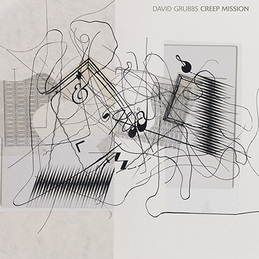
David Grubbs, Creep Mission
Blue Chopsticks BC29 LP/CD
http://www.dragcity.com/products/creep-mission
If “mission creep” refers to a long-haul fatigue cited with increasingly regularity in the present political moment, David Grubbs imagines “creep mission” to be a talismanic utterance in the effort to turn this ship around.
Creep Mission is an album of instrumental compositions with Grubbs’s effortlessly recombinant electric guitar at its core, and its m.o. is to go both deep and wide. The album goes deep in the sense that the guitar becomes the relentless, meditative focus of these songs without words, and it goes wide in that these pieces utilize a discontinuous set of arrangements that make the most out of an extraordinary group of musicians convened for the mission at hand.
Drummer and most simpatico sparring partner Eli Keszler picks up where his brilliant contributions to Grubbs’s 2016 Prismrose left off; trumpeter Nate Wooley defies you to identify his range of sounds as coming from a single player; and Jan St. Werner (Mouse on Mars, Lithops) can hardly contain his joy in transforming the proceedings into electro-prismatic splinters. For his part, Grubbs’s guitar playing has never before so confidently mangled commonsensical distinctions between composed and improvised music.
The album’s opener, “Slylight,” wends its way through a sequence of instrumental combinations in a manner redolent of Gastr del Sol’s Camoufleur. Before the album has concluded with the melancholy country raga of “The C in Certain,” waystations between have assumed the character of sludge-rock power trio (“Creep Mission,” “Return of the Creep”), pointillistic electroacoustic improv (“Jeremiadaic”), and bejeweled nylon-string guitar miniatures (“The Bonapartes of Baltimore,” “Jack Dracula in a Bar”).
David Grubbs’s solo albums often have a “the band has left the building” quality of dramatic left turns in the final act; on Creep Mission, peripatetic playing is basic strategy.
Related Blue Chopsticks titles:
BC2 David Grubbs & Mats Gustafsson, Apertura
BC5 David Grubbs, The Coxcomb / Avocado Orange
BC9 David Grubbs, Act Five, Scene One
BC11 David Grubbs & Mats Gustafsson, Off-Road
BC17 David Grubbs & Susan Howe, Souls of the Labadie Tract
BC20 David Grubbs, Hybrid Songbox.4
BC21 Belfi / Grubbs / Pilia, Onrushing Cloud
BC22 Susan Howe & David Grubbs, Frolic Architecture
BC23 Wingdale Community Singers, Night, Sleep, Death
BC24 David Grubbs, Borough of Broken Umbrellas
BC25 Belfi / Grubbs / Pilia, Dust & Mirrors
BC27 Susan Howe & David Grubbs, WOODSLIPPERCOUNTERCLATTER
BC28 David Grubbs, Prismrose
Read More
- Administrator
- Albums and Singles
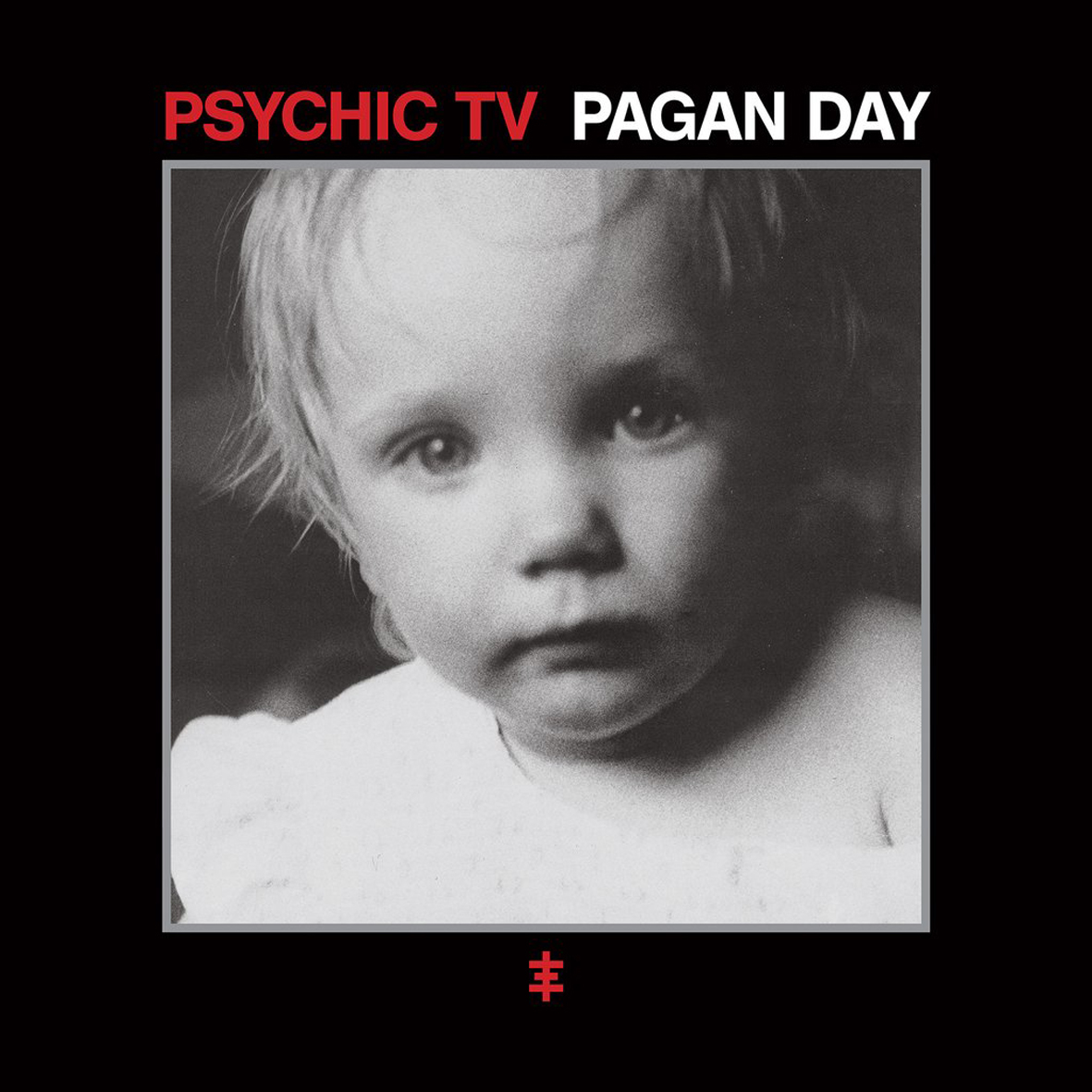 I have always viewed Psychic TV with a mixture of fascination and annoyance, as the project managed to assemble some of the most talented and idiosyncratic artists in underground music, but were far too erratic, scattershot, and over-prolific to ever turn their genuine flashes of brilliance into a great career.  That said, the founding duo of Genesis P-Orridge and Alternative TV's Alex Fergusson definitely started off strong and these two reissues roughly bookend that golden age.  Pagan Day, which first surfaced as an extremely limited release in 1984 (it was released December 24 and deleted on Christmas), is a collection of early 4-track sketches, several of which were later released in different form. The strange and uneven Allegory and Self from 1998, on the other hand, was perversely the band's pop breakthrough, featuring the half-annoying/half-subversive underground hit "Godstar" and whole lot that could never be chart-worthy.  Admittedly, there are a few moments of magic amidst that stylistic jumble, but the more polished ensemble work unexpectedly feels a bit less substantial than Pagan Day's rough-hewn creative outpouring (for good reason).
I have always viewed Psychic TV with a mixture of fascination and annoyance, as the project managed to assemble some of the most talented and idiosyncratic artists in underground music, but were far too erratic, scattershot, and over-prolific to ever turn their genuine flashes of brilliance into a great career.  That said, the founding duo of Genesis P-Orridge and Alternative TV's Alex Fergusson definitely started off strong and these two reissues roughly bookend that golden age.  Pagan Day, which first surfaced as an extremely limited release in 1984 (it was released December 24 and deleted on Christmas), is a collection of early 4-track sketches, several of which were later released in different form. The strange and uneven Allegory and Self from 1998, on the other hand, was perversely the band's pop breakthrough, featuring the half-annoying/half-subversive underground hit "Godstar" and whole lot that could never be chart-worthy.  Admittedly, there are a few moments of magic amidst that stylistic jumble, but the more polished ensemble work unexpectedly feels a bit less substantial than Pagan Day's rough-hewn creative outpouring (for good reason).
Psychic TV is a band that embodies quite an impressive array of curious paradoxes and surprises, but one of the more amusing ones is how much this incarnation seemed to be united by a genuine love of '60s pop.  Nowhere is this more apparent than on Pagan Day's surprise highlight, a gorgeous and sincere cover of The Rolling Stones' "As Tears Go By" with a very strange history.  For one, it is deceptively entitled "Farewell" and was first listed as a bonus track on the 1986 reissue, but...it was not actually on that album.  Instead, it turned up roughly a decade later on the Cleopatra reissue.  Also, it clearly features a number of people other than Fergusson and P-Orridge, but none are credited.  In any case, it is a perfect mix of lovely vocal harmonies, lush organ melodies, and an endearingly kitschy and ramshackle-sounding drum machine groove.  The less commercial side of the '60s also appears in the form of a credited and straightforward acoustic cover of Pearls Before Swine's "Translucent Carriages."  Later, "Baby’s Gone Away" sounds like a demo that could have been left on the cutting room floor from The Velvet Underground and Nico.  Yet another endearing and unexpected quirk of this era is how some of the best pieces are so simple and conventionally beautiful (a far cry from Throbbing Gristle).  My favorite song in that vein is "The Orchids" from Dreams Less Sweet, a song that appears here in embryonic form as "Cold Steel."  Sadly, "Cold Steel" is a bit too hurried and distracted-sounding to quite capture the beauty of its later incarnation (which was confusingly recorded later but released earlier).
That wide-eyed sincerity also arguably surfaces in the melancholy organ ballad "We Kiss," but the best songs that are not Rolling Stones covers tend to be the stranger and more experimental moments.  The lo-fi and exotic-sounding opener "Cadaques" is an appealing mix of propulsive disco grooves, Spanish-sounding surf guitar, and eerie minor key synths.  Later, the duo attempt similar fare with the dreamier "Alice," embellishing a pleasant and sunny synth melody with an insistent snare rhythm and amusingly intrusive "funky" bass playing.  It is quite a wonderfully charming and faintly absurd piece.  I like it.  The same is true of the ridiculous and driving "L.A.," which sounds like someone trying to clumsily compose a swaggering disco anthem on a cheap Farfisa in their bedroom.  Again: fine by me.  More legitimately great, however, is the stellar closer "New Sexuality," which sounds like a lost late-period Gristle classic, blending a hooky disco/synth pop groove with languorous deadpan vocals that do not quite conceal a hint of menace.  Unlike "Cold Steel," "New Sexuality" does not seem to have been reincarnated elsewhere, which is strange given that it was apparently a live staple.  I guess it did not need to be revisited, as the unpolished version here would be quite hard to top.  Characteristically, the rest of Pagan Day is consumed by jams, filler, and baffling missteps ("Opium" is a meandering and wrong-headed stab at the blues), but the messy charm, charisma, fun, and enthusiasm here handily outweigh the weaker moments (and a pair of legitimately great songs certainly does not hurt either).
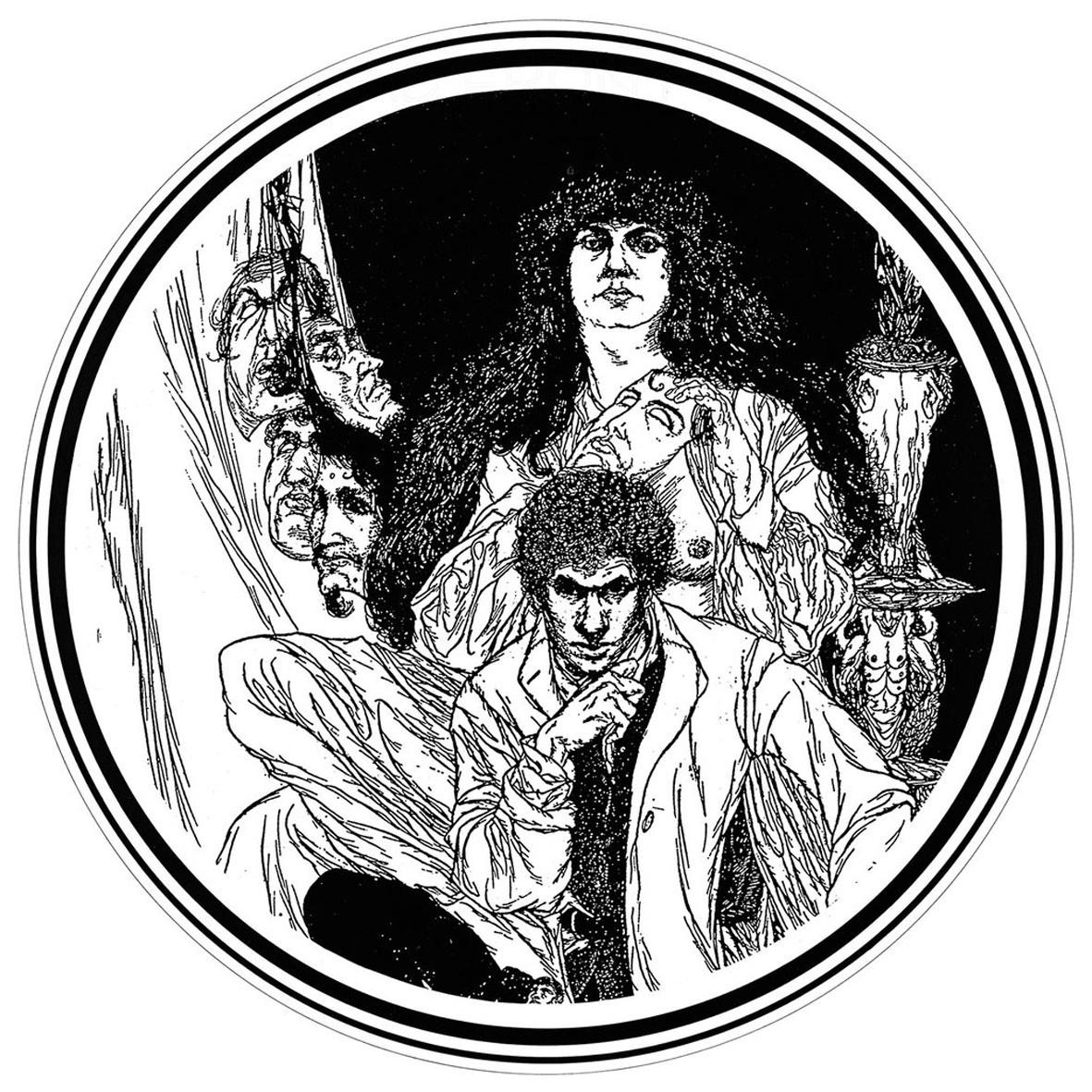
As is amusingly apparent from the cover art of Allegory, Psychic TV's other big fascination from this period (besides the '60s) is the occult–the cover stars are Brian Jones and Austin Osmond Spare.  Those two fascinations make for strange bedfellows, especially when combined with the band's naked embrace of pop music here.  Notably, this was to be the last album involving Alex Fergusson, as P-Orridge became increasingly drawn towards electronic dance music and these sessions were plagued with larger, unrelated problems that fractured their union.  As such, Allegory and Self represents the swansong of an era, albeit quite an uneven one that seems to indicate that the group was already broken and lean on solid new material.  For one, two of Pagan Day's songs (not the best ones) are reprised in more polished and fleshed-out form ("We Kiss" and "Baby’s Gone Away") and one song is largely included for comic purposes (a piece sung by Genesis's daughter Caresse).  That said, "Caresse Song" does have kind of an outsider carnival-esque brilliance to it, marrying a stumbling one-finger calliope-esque organ to amusingly tuneless ramblings like "don't do what you want, do what I want cuz it’s not your house–it's my house."  The band seems to have a lot of trouble sticking to a direction even when they are not handing over the controls to a child though, as Allegory's remaining eight songs erratically veer from straightforward disco to '60s pop to polished electronic pop to snarling and noisy jams.  Some of those songs are quite good, but just as many feel very much half-baked.  It is fascinating that a band that set out to release 23 live albums in two years could have such a difficult time assembling a solid batch of songs for a third studio album: Allegory sounds like the work of three or four different bands, only one of which seems particularly focused on songwriting.
Obviously, no discussion of this album is complete without bringing up the Brian Jones-worship of "Godstar," but I am not overly fond of it myself.  It is certainly an interesting piece of music though, positing Jones as a brilliant martyr ("a lamb going to the slaughter") who was betrayed by his friends.  I like that it brazenly appropriates a Stones riff and hides an acidic commentary in very innocuous-sounding pop, but it still sounds like innocuous pop.  Much more compelling is the following "Just Like Arcadia," which is similarly upbeat and catchy, but features a bittersweetly beautiful chorus and some great vocal harmonies.  That penchant for strong vocal harmonies reappears in one of the other highlights, "Being Lost," which essentially sounds like a darkly beautiful Beach Boys cover (if they had organs, banjos, and a fascination with tarot cards). Elsewhere, both "She Was Surprised" and "Ballet Disco" sound like fairly straightforward stabs at instrumental disco, though the latter makes playfully exuberant use of stuttering samples, unusual percussion, and slap-and-pop bass riffage (presumably from Sharon "Mouse" Beaumont).  The rest of the album is considerably darker, messier, and quite spontaneous-sounding.  For example, "Thee Dweller" just sounds like a murky jam with jabbering vocals and werewolf howls and goes a long way towards explaining the many guests involved in this album (it would be very easy to hand a dozen people instruments and ask them to play (or howl) along).  Wolves and snarling, jabbering vocals are also a prominent component of the more formless "Southern Comfort," a piece that is not a far cry from a Halloween sound effects CD.  Much better (and less feral) is the howling and clattering "Starlit Mire," which feels like a darkly simmering slab of early post-punk (it borrows its name from a book illustrated by Spare, incidentally, ensuring maximum occultist cred).  Bizarrely, both "Starlit Mire" and "Thee Dweller" feel (and sound) live, which is a curious choice given the incredibly polished production of some other songs.
While it is far from the album’s best song, "Starlit Mire" goes a long way towards explaining Psychic TV's (anti-) cult following in the form of Thee Temple ov Psychick Youth, as Genesis sounds like a wild-eyed shaman imparting dark wisdom over a rapturously free-sounding cacophony.  I can certainly see the appeal of that, but I am much more a fan of good songs than I am of new messiahs, which means that Allegory's appeal for me lies primarily in the classic "Just Like Arcadia."  The liner notes for the Cleopatra reissue are quite helpful in elucidating exactly what went right and what went very wrong with this album: it was planned to be Psychic TV's masterpiece, as Genesis had a strong concept, a sympathetic producer (Ken Thomas), a vocal harmony wizard (Mickey Groome), and a #1 hit single on the UK indie charts all in place…until some drama with their manager left the band in financial ruin and unable to finish the album.  There are a handful of songs here that seem like they were meant for that magnum opus and completed during that initial surge of optimism, but the band's ill-timed flurry of hardships led to the departure of both Thomas and Fergusson, with the resultant and hobbled final product padded with demo tapes that Genesis was eventually able to locate in some boxes somewhere.  Consequently, this album represents the death rattle of Psychic TV’s first phase rather than its triumphant culmination, but it is not without a smattering of exquisite pleasures.
 
 
Read More
- Administrator
- Albums and Singles
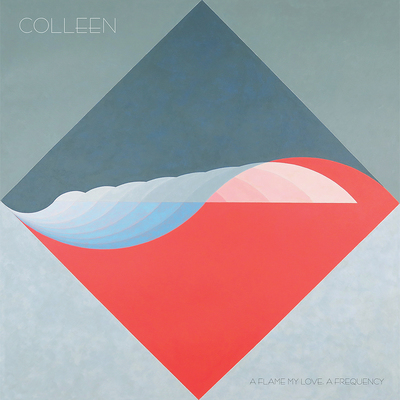
French artist Colleen is fearless in her willingness to explore new sounds and new ways of creating music as a solo performer. On her new album A Flame My Love, A Frequency she introduces the most drastic change to her music since she began singing on her fourth album. A chance encounter with a Critter and Guitari synthesizer at King Britt’s Philadelphia studio on the Captain Of None album tour cracked the compositional model wide open. Colleen bought a Critter and Guitari Pocket Piano with the aim to use it through a newly-acquired Moog filter pedal to create new and interesting rhythms to accompany her voice and viola da gamba. But it turned out the sounds of this viola and rhythm combination was not what she was looking for, so in typical Colleen fashion, she set the viola da gamba aside altogether and picked up an additional Critter and Guitari synth, the Septavox, dug out her her trusted Moog delay and dove right in.
Words used to describe her muse Arthur Russell are equally applicable to Colleen (multi-instrumentalist Cécile Schott). Schott's compositions can be in turn pop or experimental, vocal or instrumental, and acoustic or electronic. She has drawn on baroque sounds of a classical instrument using the most modern pedals and looping techniques. Shape shifting as she does, the pieces are always distinctly her strong and utterly unique musical voice. A constant across Colleen's albums are delicate extended melodies, minutely detailed soundscapes, and explorative unbounded compositions. Colleen's work is a direct result of her core belief that in order to keep growing as an artist, you need to continue to be willing to experiment and to embrace drastic changes.
The music of A Flame… is the closest Colleen has come to a concept album, a reflection upon one year in her life that began in the Autumn of 2015. The album‘s central theme is the inescapable fact that life and death always walk hand in hand. Schott is an avid bird watcher and her home and studio on the coast of Spain allow for frequent trips out into the wilds. As any naturalist knows, extreme beauty and vitality go hand in hand with brutality. This symbiosis was made more personal when, on the way back from visiting a very ill relative in France, she decided to spend the night in her former home of Paris in order to take her viola bow for repair at a luthier in the Republique area. It was late afternoon and she remembers the beauty of Paris and people sitting and enjoying the cafés. That was November 13th and a mere 4 hours later these very same cafés were the scene of utter terror and death.
A few weeks after the events, Colleen started composing the songs that make up the album. She recorded each song live with minimal edits and vocals were recorded without overdubs, creating a symbiosis between the machine and the performer that mirrors the album’s core concept. The personal narrative of the year in question yields a more vulnerable sound than any previous recordings by Colleen. "Separating" is an emotional response to being overwhelmed by the inevitability of death. Feelings of fear are never far from feelings of joy as they are in "Winter Dawn" with its propulsive thump and ominous lyrics "I came home with a fistful of fear," that manage to shift towards hope with "Love alone is your home." Joy and hope are strongly present throughout the album, the catalyst that lifts us out of the darkness as inevitably as night to day. We are shown the wonderment of "Another World," and through the metaphors of light, shown joy as in the title track. A flame my love, a frequency is an album that finds optimism in the face of tribulation, a meditation on humanity’s ability to prevail. It is a beautiful, complex album by a singular and remarkable musician.
More information can be found here.
Read More
- Administrator
- Albums and Singles
EMEGO 239 / UUUU
s/t
- 1. The Latent Black Path Of Summons Served (7:20)
- 2. Partial Response Takes Another Form (7:23)
- 3. Five Gates (16:09)
- 4. Boots With Wings (4:18)
- 5. It’s Going All Over The Floor (4:57)
- 6. The Princess Anne Love Cassette (5:23)
- 7. Verlagerung, Verlagerung, Verlagerung (7:18)
- 8. Il Ventre Del Nulla (6:07)
Pre-order
VINYL INCLUDES DOWNLOAD CODE
UUUU are Edvard Graham Lewis, Valentina Magaletti, Matthew Simms & Thighpaulsandra
Recorded and Mixed at Aeriel Studios, Brechfa by Thighpaulsandra
Mastered by Sarah Register
Photography by Antonio Curcetti
UUUU is a new outfit featuring Edvard Graham Lewis, Thighpaulsandra, Matthew Simms and Valentina Magaletti.
Individually these humans have implanted feathers in caps such as Coil, Dome, Wire, Tomaga, etc. Collectively they form UUUU, a powerhouse construction of fierce and free sonic exploration, as liberating as it is frightening, resulting in, the richly rewarding. The artists united present a project of exquisite curiosity and confident chaos where the individual thumbprints mesh into a gloriously muscular frenetic free sonic soup. It's Going All Over The Floor presents itself as a terse meeting between dance, ambient, abstraction and improvisation. The Latent Black Path Of Summons Served proceeds in a tense energy field where random elements bounce around until locking into a fourth world pattern designed to fall into a dense mass of ecstatic noise. Boots with Wings is classic Lewis - a pop tune from the other side of the mind.
UUUU is a schizophrenic seething/soothing masterpiece of a past/present hybrid equally at home in the club, the home and the mind.
Read More
- Administrator
- Albums and Singles
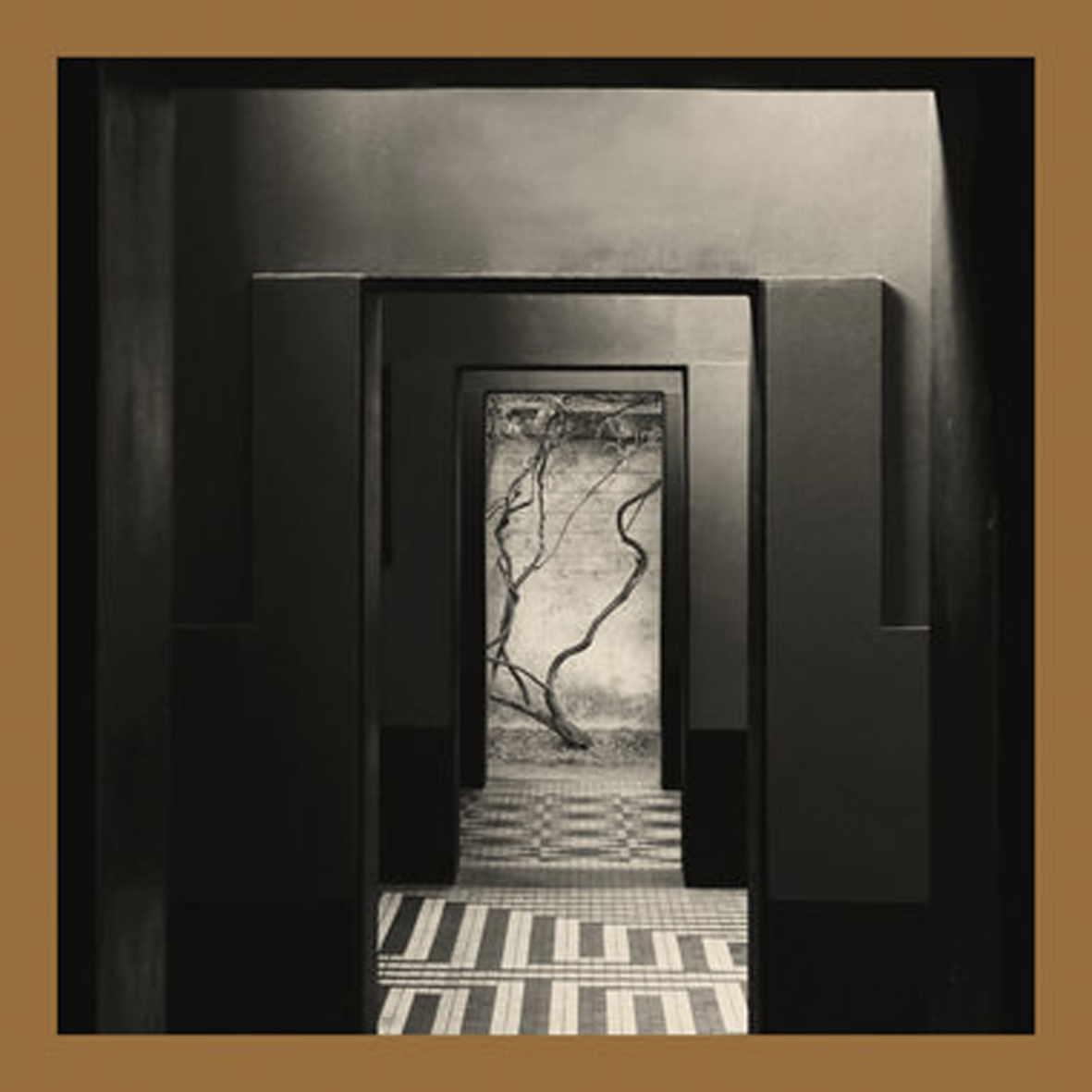 Yair Elazar Glotman's monster Études album lamentably slipped by me when it surfaced in 2015, but I immediately became quite a fan once I finally heard it.  As a result, I was thrilled to discover that he was returning once more to wood and strings after last year's Blessed Initiative album.  His collaborator, Mats Erlandsson, is a part of the primarily noise-based Posh Isolation milieu, which makes this an intriguing pairing for the task at hand: creating "imaginary, dislocated 'folk' music for the current dark ages" (exactly the sort of endeavor that seems tailor-made for Miasmah).  Given that the two artists are primarily known for experimental/electronic fare, it is a bit eyebrow-raising to find them exclusively wielding an eclectic array of zithers, singing bowls, Moroccan lutes, and other traditional instruments here, but their production talents prove to be quite useful for shaping their acoustic ethno-appropriations into a shadowy suite of appealingly seething and grinding neo-classical brooding.
Yair Elazar Glotman's monster Études album lamentably slipped by me when it surfaced in 2015, but I immediately became quite a fan once I finally heard it.  As a result, I was thrilled to discover that he was returning once more to wood and strings after last year's Blessed Initiative album.  His collaborator, Mats Erlandsson, is a part of the primarily noise-based Posh Isolation milieu, which makes this an intriguing pairing for the task at hand: creating "imaginary, dislocated 'folk' music for the current dark ages" (exactly the sort of endeavor that seems tailor-made for Miasmah).  Given that the two artists are primarily known for experimental/electronic fare, it is a bit eyebrow-raising to find them exclusively wielding an eclectic array of zithers, singing bowls, Moroccan lutes, and other traditional instruments here, but their production talents prove to be quite useful for shaping their acoustic ethno-appropriations into a shadowy suite of appealingly seething and grinding neo-classical brooding.
I am quite curious about how the concept for this project originated, as the only real harbinger of this path that I can see is Glotman's academic background in classical double-bass and electro-acoustic composition.  That background was probably quite useful when trying to compose an album with a battery of unfamiliar acoustic instruments, but the premise of Negative Chambers arguably seems like something far more likely to emerge from the Sublime Frequencies/Sun City Girls scene (a hypothetical album that would presumably be considerably less bleak and considerably more ragged).  Of course, I say "arguably" because Glotman and Erlandsson are not interested in ethno-musicology so much as they are interested in using the themes of decontextualization and disconnection to create something "new."  I am not sure they quite succeeded in their stated objective, but they certainly managed to produce an unusual and absorbing album with their efforts.  To me, Natural Snow Buildings are the quintessential band who have mastered the art of creating imaginary folk music, while Negative Chambers is far more of a rigorous and well-produced drone/neo-classical album that just happens to use some unusual instrumentation.  I like it, but there is no avoiding the fact this is a very contemporary-sounding album that feels like it was made by a handful of classically trained vampires crowded around a harmonium in their haunted castle.  As such, it is not so much a radical experiment as it is an album that fits very comfortably in the niche occupied by label mates like Kreng and Svarte Greiner: very dark, very cinematic.
The most quixotic part of this undertaking is that one of the unavoidable foundations of folk music is a strong and memorable melody (or at least an infectious rhythm), which is something that both artists have seemingly been historically hell-bent on avoiding at all costs.  For the most part, that trend continues here with the exception of the closing "Format and Formalize Desire," which feels like a beautifully tender and aching elegy for humanity.  Generally, however, Erlandsson excels at dense, gnarled drones, while Glotman seems quite fixated upon vivid textures, sharply realized details, and imaginative deconstructions.  Aside from the occasional rippling or glacially cascading minor key arpeggio, Negative Chambers basically feels exactly like the two artists' expected aesthetics swirled together into a feast of shadowy moods, creeping dread, and rich texture (albeit considerably more stark and organic-sounding than usual).
Aside from the aforementioned "Format," the strongest manifestation of Glotman and Erlandsson's shared vision is "Desacrelasation," which eschews any attempt at melody in favor of a deep, densely undulating rumble of evil-sounding drone beneath a weirdly majestic-sounding haze of shifting harmonies.  The remaining six pieces are a bit less perfect, unfortunately, largely sticking to variations upon something resembling glacially slow and gloomy chamber music.  My overall impression is that neither artist was particularly excited about the "composition" aspect of this album, as the songs themselves feel like simple minor key vamps that needed to put in place before they could gleefully dive into the more important details like orchestration, texture, and sound design.  Happily, however, nearly every piece at least boasts some kind of striking and inventive "hook" to make it stand out.  In "Cornelian Cities," for example, that hook is an absolutely satanic-sounding metallic shimmer, while other pieces offer delights like viscerally shuddering bass strings ("Turn Roots in Iodine") or sinisterly fluttering and shivering violins ("Ceramic Relic").
While I doubt it was intended this way, it belatedly occurs to me that Glotman and Erlandsson might have actually succeeded in creating "folk music for the current dark ages" if that idea is taken to its most pessimistic and perverse extreme.  In simpler, more community-focused times, traditional music celebrated a shared history and offered easily recognizable melodies that everyone knew, so everyone could participate.  In the dark ages of Negative Chambers, everyone is isolated and depressed, no one has a shared history, and everything is decontextualized and recontextualized to strip away its original meaning.  If Glotman and Erlandsson willfully set out to erect a soul-crushing monument to the emptiness and alienation of the modern world using Tibetan singing bowls and Gnawa cymbals as their material, my hat goes off to them–they are a hell of a lot smarter and more ambitious than I am.  However, if Negative Chambers is not actually a brilliant and damning post-modernist denunciation of the current state of humanity, it is at least at compelling album by an unlikely pairing as well as a noble experiment.  While I only fully embrace the final two songs, my tolerance for gloom is admittedly quite low these days and that is the niche that Negative Chambers is targeting.  I tend to be drawn to the more eclectic side of the Miasmah milieu (i.e. the albums that sound the least like they belong on that label (or anywhere, really)).  I suspect most fans of the Miasmah aesthetic (logically) feel the exact opposite, so this unholy union's blackened transfiguration of chamber music may very well lock down a place as one of the label’s defining releases.  It is extremely hard to conceive of anything more "Miasmah" than this.
 
Read More
- Administrator
- Albums and Singles
Fossil Aerosol Mining Project
The Unlistening Place
Afterdays Media / The Helen Scarsdale Agency
ADM020
release date: August 31, 2017
https://soundcloud.com/helen-scarsdale/fossil-aerosol-mining-project-silent-time
http://www.helenscarsdale.com/published/famp-unlistening.htm
Fossil Aerosol Mining Project are an enigmatic lot, comprised of sonic archeologists residing the American Midwest. Their work spans several decades and is almost always in flux through the variable states of contextual re-investigation and technological degradation. Aesthetically, FAMP align with the post-industrial research of :zoviet*france:, Cranioclast and Robert Turman. Bacteria damaged tape loops, ghostly time-lag accumulation and the excavation of mediated sound from suburbia's failures are key components to the Fossil Aerosol's working process.
The core tracks of The Unlistening Place were recorded in 2015, and at the time were intended to be part of what was to be the final Fossil Aerosol album, scheduled for a distant release. But history circled back on itself, and the result was a reworking of future tracks, alongside more new material. Historiography eating its own tail.
Read More
- Administrator
- Albums and Singles
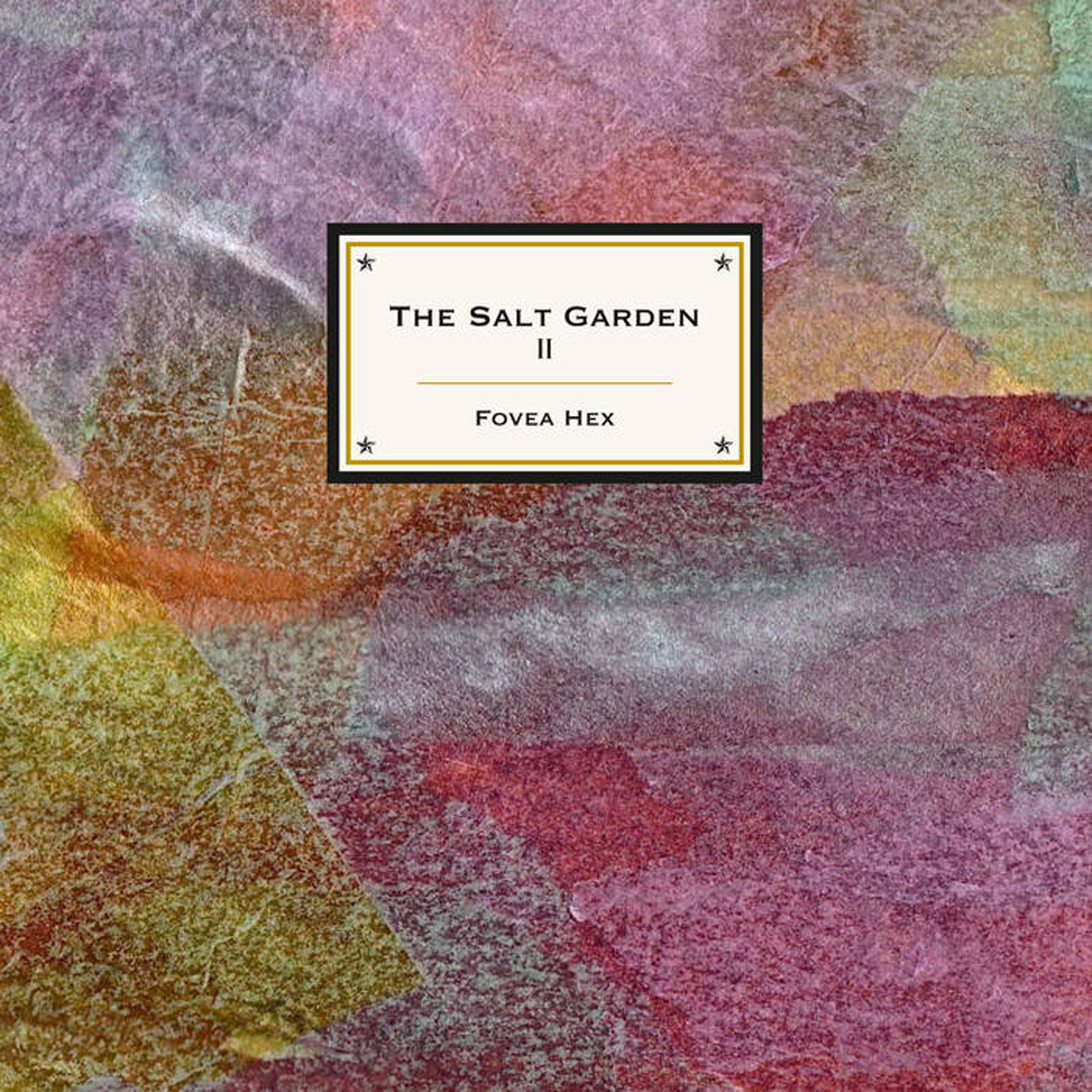 Clodagh Simonds and her impressive coterie of collaborators have returned for the much-anticipated second installment of the planned Salt Garden trilogy.  In a broad sense, this latest EP is a clear continuation of its predecessor, consisting of three timeless and drone-informed pieces of sublime and Siren-esque choral beauty and an instrumental coda.  However, this release also marks an intriguing evolution upon the aesthetic of the first Salt Garden, opting for a more understated and unadorned approach.  As such, there is not much here that offers quite the intensity and immediacy of "The Golden Sun" or "The Undone Mother," but the compensation is that Simonds has further distilled her vision into something more naked and pure, eschewing ornamentation and orchestration to shift more of the heavy lifting to her voice and her words.  They can certainly handle it.
Clodagh Simonds and her impressive coterie of collaborators have returned for the much-anticipated second installment of the planned Salt Garden trilogy.  In a broad sense, this latest EP is a clear continuation of its predecessor, consisting of three timeless and drone-informed pieces of sublime and Siren-esque choral beauty and an instrumental coda.  However, this release also marks an intriguing evolution upon the aesthetic of the first Salt Garden, opting for a more understated and unadorned approach.  As such, there is not much here that offers quite the intensity and immediacy of "The Golden Sun" or "The Undone Mother," but the compensation is that Simonds has further distilled her vision into something more naked and pure, eschewing ornamentation and orchestration to shift more of the heavy lifting to her voice and her words.  They can certainly handle it.
The EP opens on an appropriately minimal note with "You Were There," as Simonds' vocals are initially backed by little more than the sustained whine of a wet finger around a glass and a slow-moving cello motif from Kate Ellis.  As it progresses, however, the piece gradually becomes more fleshed-out, as a cooing backdrop of backing vocals appears along with a burbling electronic pulse.  Later, it blossoms still further into a "quiet storm" crescendo of sorts, as an understated and rolling undercurrent of percussion begins to propel the piece along while multiple layers of vocals begin to swirl dreamily together.  That transition provides a satisfying dynamic arc to the piece, but the real beauty lies almost entirely in the central vocal melody, which has a kind of magnetic, ritualistic intensity that arguably renders the accompanying music almost superfluous.  That is a curious recurring theme throughout the record, as the bulk of these songs would be every bit as good if nearly all of the music was excised.  On its face, that may not seem like a significant observation, but it is a lot more striking when the collaborators on-hand include folks like Brian Eno and Colin Potter.  I like the music just fine, of course, but the clarity and power of Simonds' vocals unavoidably have a bit of an eclipsing effect on absolutely everything around them.
My favorite piece is the following "Chained," which takes a bit of a more mysterious and haunting turn ("if you walk away to find a quiet place, they will track you down by the sand").  Again the music is quite subtle (a subdued burble of synth and some dark piano chords), but Simonds' eerily harmonized and poetic vocals are absolutely gripping.  While a few rays of light are provided by the pizzicato strings of Ellis and Cora Venus Lunny, the overall effect is that of a somnambulant priestess languorously intoning a tale that only grows deeper, darker, and more cryptic as it progresses.  It is quite a deceptively heavy piece.  As a result, the quietly lovely and hopeful "All Those Signs" comes as quite a surprise in its wake.  Featuring the largest ensemble of any of the four pieces, it veers unexpectedly close to conventional prettiness on its surface, resembling a Celtic-sounding variation on an old spiritual.  At its core, however, it is a bittersweet meditation on the fragility of life on Earth.When it is at its simplest, it is quite an achingly beautiful piece, but I have some mixed feelings about its unusual structure and mass choir crescendo ("Long may we cheer and sing!Long may our floodlights shine!"), as it crosses the blurry line separating "hymn-like" from "maybe a bit too hymn-like."That said, I have something of an irrational antipathy towards major keys and expressions of human joy, so those final heavenward swells may resonate a lot more with less conspicuously flawed listeners.  The same is probably true of the closing instrumental "Piano Fields 1," a gently drifting and pastoral haze of tender piano and Colin Potter's electronics.  I can certainly see the appeal of both, but Fovea Hex lives and dies by Clodagh's vocals (for me, at least), so diluting that essence is rarely a step in the right direction, unless it is to add variety to a more expansive and ambitious release.
While anything new from Fovea Hex is always extremely welcome, The Salt Garden II admittedly suffers a bit from feeling somewhat insubstantial (the four pieces add up to a very lean 20 minutes).  As such, I am a bit envious of the fans who were smart enough to pounce on the pre-order version, which is expanded with a blearily droning and oft-gorgeous 20-minute reinterpretation of "All Those Signs" by Abul Mogard.  Someone should commission him to be a full-time Fovea Hex remixer, as he managed to distill and isolate absolutely everything that I liked about that piece and expand it into a sublime and slow-burning epic as long as the entire EP.  My sole other quibble is also brevity-related, as I am a bit perplexed by the recurring inclusion of an instrumental coda at the end of each installment.  It makes sense from a sequencing standpoint, but it takes up valuable real estate on a vinyl 10" that could be far more meaningfully used for another vocal piece.  Of course, the counterpoint is simply that Simonds works quite slowly, so it makes perfect sense for Fovea Hex to release a slow trickle of tantalizing smaller works rather than remaining silent for years and years as a full album gradually takes shape.  I can happily accept that as a fundamental concession of Fovea Hex fandom, which is something that I continue to embrace.This has always been a wonderful and unique project and this latest EP continues that trend beautifully.  Curious new listeners would probably be better served by investigating the somewhat stronger first installment before this one, but longtime fans will undoubtedly appreciate how this latest dispatch deepens and further refines The Salt Garden's otherworldly spell.
Samples:
 
Read More
- Administrator
- Albums and Singles
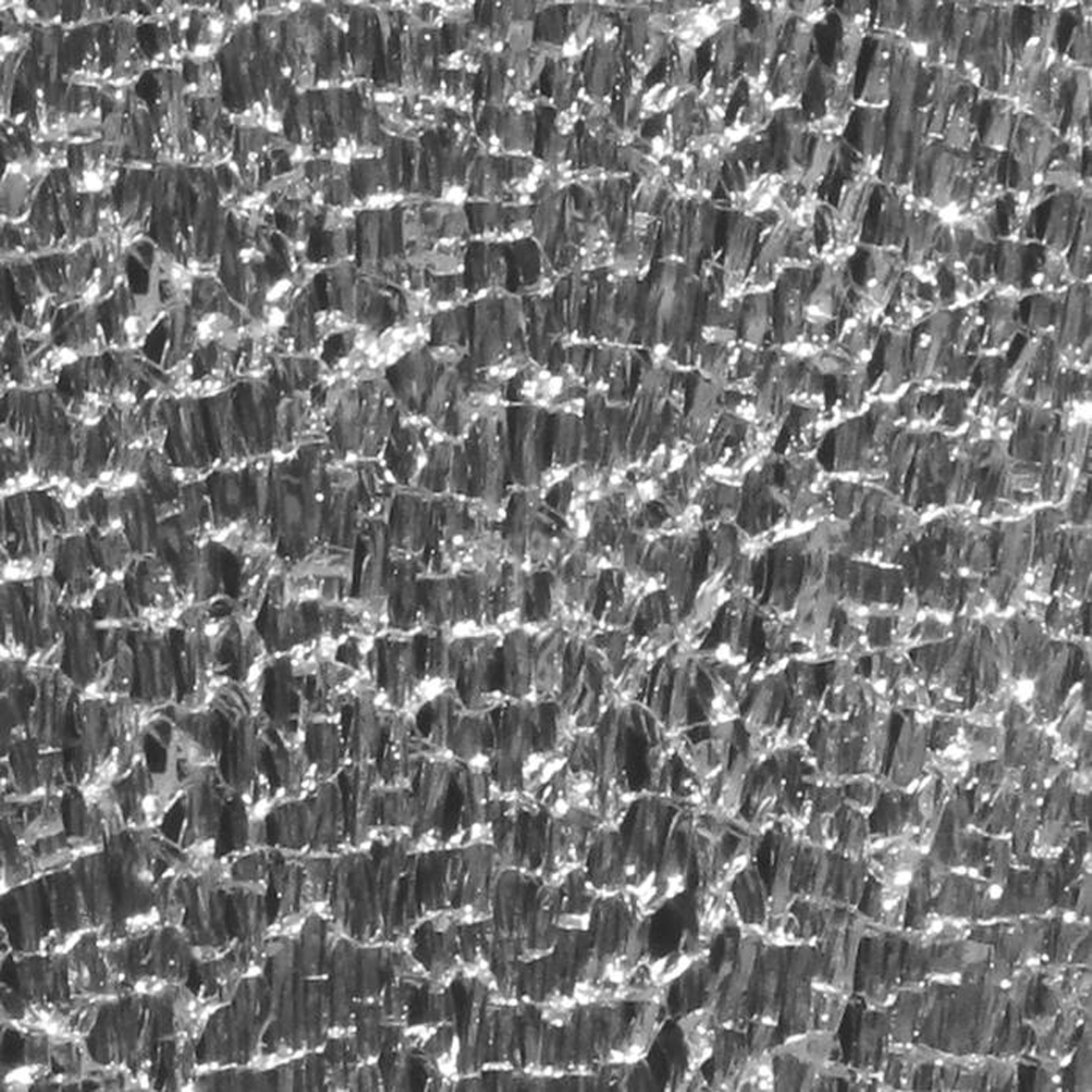
This is apparently Janek Schaefer's 30th album in 20 years, a milestone which surprised me a bit, as there is a considerable portion of his oeuvre that I have not heard.  That said, the handful of albums that I have heard have been kind of hit or miss, as Schaefer often errs a bit too much on the side of high-concept, cerebral sound art for my liking.  Glitter In My Tears, however, is right up my alley: a sustained and hallucinatory fever dream of brief and frequently beautiful vignettes (or "microcosms of haunted memory," as Schaefer himself describes them).  The inevitable downside to such an ambitious endeavor, of course, is that Glitter is exasperatingly populated with wonderfully promising themes that appear and vanish again in a minute or less.  In most hands, that would be quite a big problem, but Glitter is so uniformly strong and flows along so fluidly that I am left with little time to lament the more substantial pieces that might have been.  This is a wonderfully shifting, evocative, and immersive album from start to finish.
It would probably not be terribly far off the mark to state that almost any of Glitter In My Tears' 26 pieces would make a deceptive and non-representative opening piece, yet that somehow seems especially true of the actual opener, "Sparkles Into The Light of Night."  The primary reason is that "Sparkles" stretches out for over six minutes, making it easily the lengthiest and most substantial piece on the entire album.  It is a bit of a stylistic curveball as well though, resembling the sort of lazily swooping and space-y synth reverie that might turn up as an interlude on a late-period Pink Floyd album.  Nothing else on Glitter comes at all close to fitting that description.  In fact, the only remotely consistent thread to emerge from "Sparkles" is just that the bulk of the album is vaguely rooted in drone, even if Schaefer treats the genre a lot like a kaleidoscopic and surreal playground. Needless to say, Schaefer covers a lot of ground within those rough confines, but the strongest pieces in that vein are the lushly hissing thrum of "Beam Me Up," the oscillating modular synth pulses of "Rise," and the oversaturated hyper-minimalism of "Reflection Waves."  Similarly compelling yet somewhat different are Schaefer's eclectic and consistently wrong-footing experiments with loops.  One of my favorites is the tragically brief "Hells Bells," which loops a crackling snippet of "The Nutcracker Suite" to impressively nightmarish effect.  The unexpectedly funky and downbeat "What Comes Around" is yet another stand-out moment in loop fun, briefly threatening to turn Glitter into the unlikeliest of party albums.
There is also a third category encompassing vaguely neo-classical fare, such as the Satie-esque (if truncated) piano miniature "Looking For Love" and the heavy-bass-drone-meets-church-organ experimentation of "Low Points," though Schaefer only dabbles a little bit in that direction.  He dabbles quite a bit more in an uncategorizable fourth category that can probably be best described as "gleefully weird, one-off mindfuckery," a theme exemplified by the one-two punch of the submerged and hallucinatory "Spells" seguing into the fitful and lurching saxophone/music box duet of "Dawn Draws In." The swirling and obsessive-sounding orchestral loop of "Lagoon" is yet another fine bit of aberrant disorientation, as is the blearily Caretaker-worthy big-band jazz of "Forgetting The Way Forward."  That said, it is unquestionably "Tale of Two Angels" that takes home the prize for the single strangest interlude on the album.  For one, there seems to be at least two very bizarre things happening at once: 1.) a saccharine and beatific harp motif that sounds plucked from a religious cartoon, and 2.) a microphone placed entirely too close to some gibbering, overexcited birds.  There are some children's voices thrown into the mix as well, but the bigger twist is that the harp pattern unexpectedly turns its back on tranquility and bliss and descends into much darker and more melancholy waters without warning.  It feels a lot like a hyper-real variation upon late-night, hypnagogic channel-surfing in which nothing at all seems to make sense.
Obviously, an album like Glitter In My Tears is bit of an inherently compromised endeavor, as the joy of having such an endless tide of promising ideas wash over me is tempered a bit by my occasional frustration at hearing a wonderful motif get cut short long before its time.  "Beyond Hope" is the most striking example of the latter, as Schaefer creates an eerie and vaguely menacing soundscape of backwards piano that seems to fade in and out of focus, yet blithely traipses onward to the next idea after a mere minute.  That particular feat admittedly made me want to scream, but Schaefer otherwise exercises relatively unerring judgment, keeping the album flowing briskly, (fairly) seamlessly, and unpredictably along without ever lingering on anything longer than he should.  Failing to fully capitalize on good ideas feels like much less of a musical crime than being over-infatuated with weaker ones, but it must be said that Glitter is quite riddled with quickly abandoned one-minute flashes of inspiration.  Normally, the pessimist in me would zero in on that "countless missed opportunities" aspect, but Schaefer ultimately won me over with the sheer volume of great material that he somehow managed to pack into this album.  Admittedly, few pieces stick around for very long, yet it feels far more significant that I mentioned roughly a dozen individual pieces in this review and feel like I still probably missed a few of my favorites.  Also, I wonder if this is an unwitting glimpse into the future, as collaging raw material for roughly four albums into an accelerated and condensed whirlwind of content feels like the perfect album for humanity's rapidly dwindling attention span and escalating appetite for entertainment consumption.  As such, Glitter In My Tears may very well be a dark horse candidate for the most prophetic album of the year.  If not, it is still quite an absorbing experiment.
 
Read More


